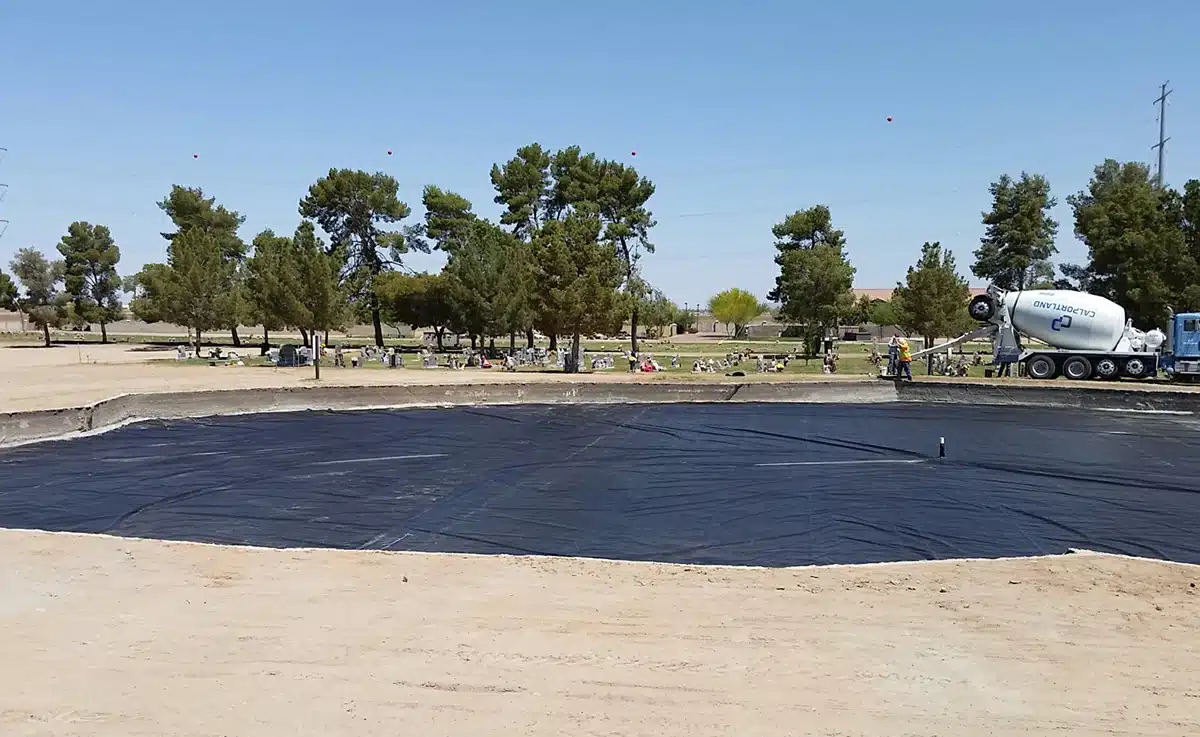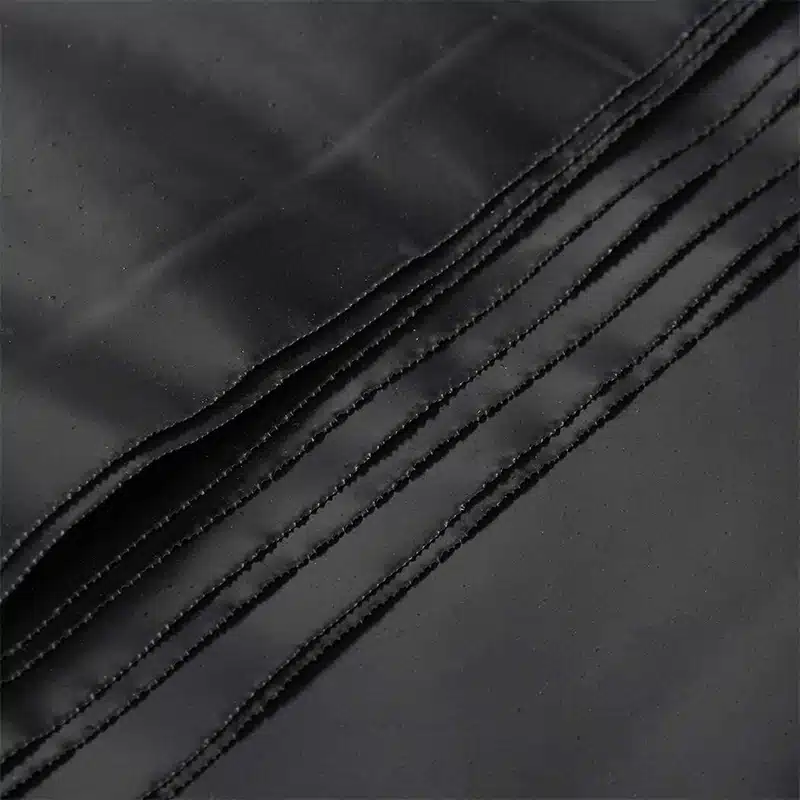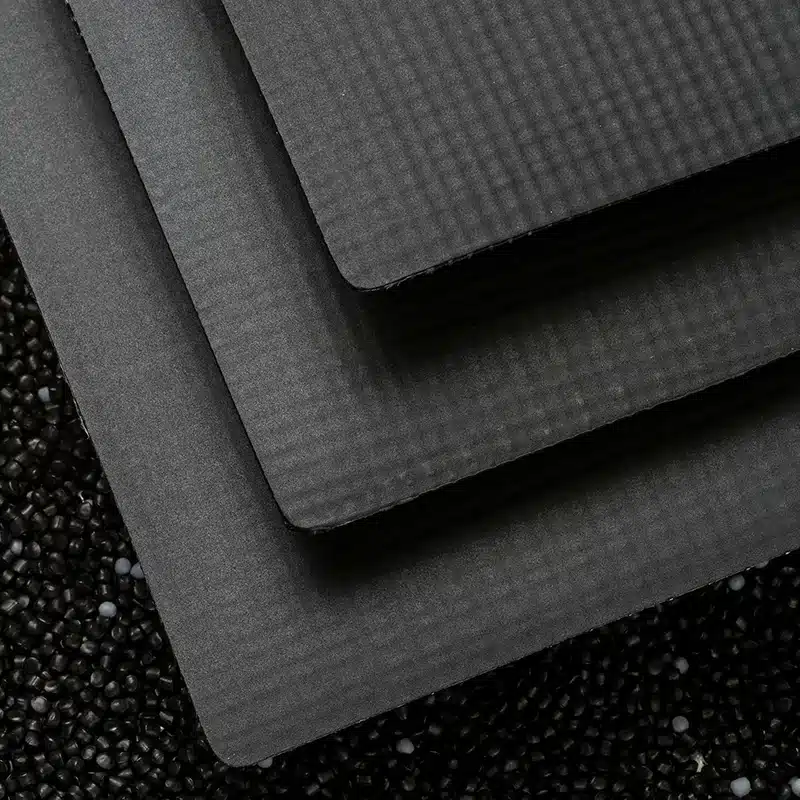+86-159 9860 6917
info@geofantex.com
geofantex@gmail.com
+86-400-8266163-44899
In the realm of environmental protection and engineering, the technology and materials we use to safeguard our natural resources and infrastructure are critical. One such innovative material that has gained prominence over the years is the HDPE geomembrane liner. This article delves into the essential aspects of HDPE geomembranes, exploring what they are, their applications, differences from other liners such as PVC, and crucial characteristics like thickness. By understanding these components, we can appreciate the vital role HDPE geomembranes play in various industries, from waste management to water conservation.

What is HDPE Geomembrane Material?
High-density polyethylene (HDPE) geomembrane material, a premium type of plastic liner crafted from high-density polyethylene, stands as a testament to durability and resistance. This high-grade polymer, celebrated for its steadfastness against chemical and UV radiation, positions High-Density Polyethylene Geomembrane as a formidable protective barrier. Its main role is to thwart the intrusion of leaks or contaminants into the soil, groundwater, or any other areas vulnerable to pollution. Its widespread application across landfill linings, mining operations, and water containment projects is a nod to its enduring nature and its gentle impact on the environment.
What are HDPE Liners?
HDPE liners, recognized as one of the materials used to make heavy-duty liners and geomembranes, specifically denote the sheets or panels crafted from HDPE geomembrane material. These are meticulously designed to line or cover areas demanding environmental protection. Their engineered impermeability renders them perfect for applications that require robust containment solutions, such as in ponds, canals, or hazardous waste facilities. The inherent flexibility and adaptability of HDPE liners further enhance their appeal, enabling customized installations that can accommodate a wide array of shapes and sizes of containment areas.

What is the Difference Between HDPE Liner and PVC Liner?
The primary distinction between HDPE and PVC (Polyvinyl Chloride) liners is rooted in their material composition, durability, and suitability for various applications. HDPE liners, constructed from high-density polyethylene, not only provide superior strength and chemical resistance but also exhibit exceptional UV stability. Moreover, The HDPE pond liners are resistant to UV, oxidation, chemical reactions, tear-resistant, and puncture-resistant, setting them apart from PVC liners in terms of resilience. Conversely, PVC liners are favored for their flexibility and cost-effectiveness but tend to falter under direct sunlight and in aggressive chemical environments due to their lesser durability. The decision to opt for HDPE or PVC liners is influenced by the project’s specific needs, including the conditions of exposure, desired longevity, and budgetary considerations.
How Thick is a HDPE Liner?
The thickness of HDPE liners can vary significantly depending on their intended use, spanning a range from 30 to 120 mil (0.8–3 mm). Within this spectrum, a thickness of approximately 1.5mm (or about 60 mil) is commonly preferred for a majority of applications, striking an optimal balance between durability, flexibility, and cost-effectiveness. However, for projects facing more stringent demands, such as those with high levels of chemical exposure or extreme environmental conditions, opting for thicker liners within the 30 to 120-mile range may be essential to guarantee long-term reliability and protection.
HDPE geomembrane liners represent a critical component in the arsenal of materials used for environmental protection and industrial applications. Their robustness, chemical resistance, and versatility make them a preferred choice for projects requiring reliable containment solutions. Whether comparing HDPE to PVC liners or deciding on the appropriate thickness for a specific application, understanding the properties and benefits of HDPE geomembrane liners is essential for making informed decisions that ensure the safety and preservation of our environment. By leveraging the strengths of HDPE liners, industries can continue to innovate in ways that respect and protect the natural world.



Get Free Sample
We’ll respond as soon as possible(within 12 hours)






















